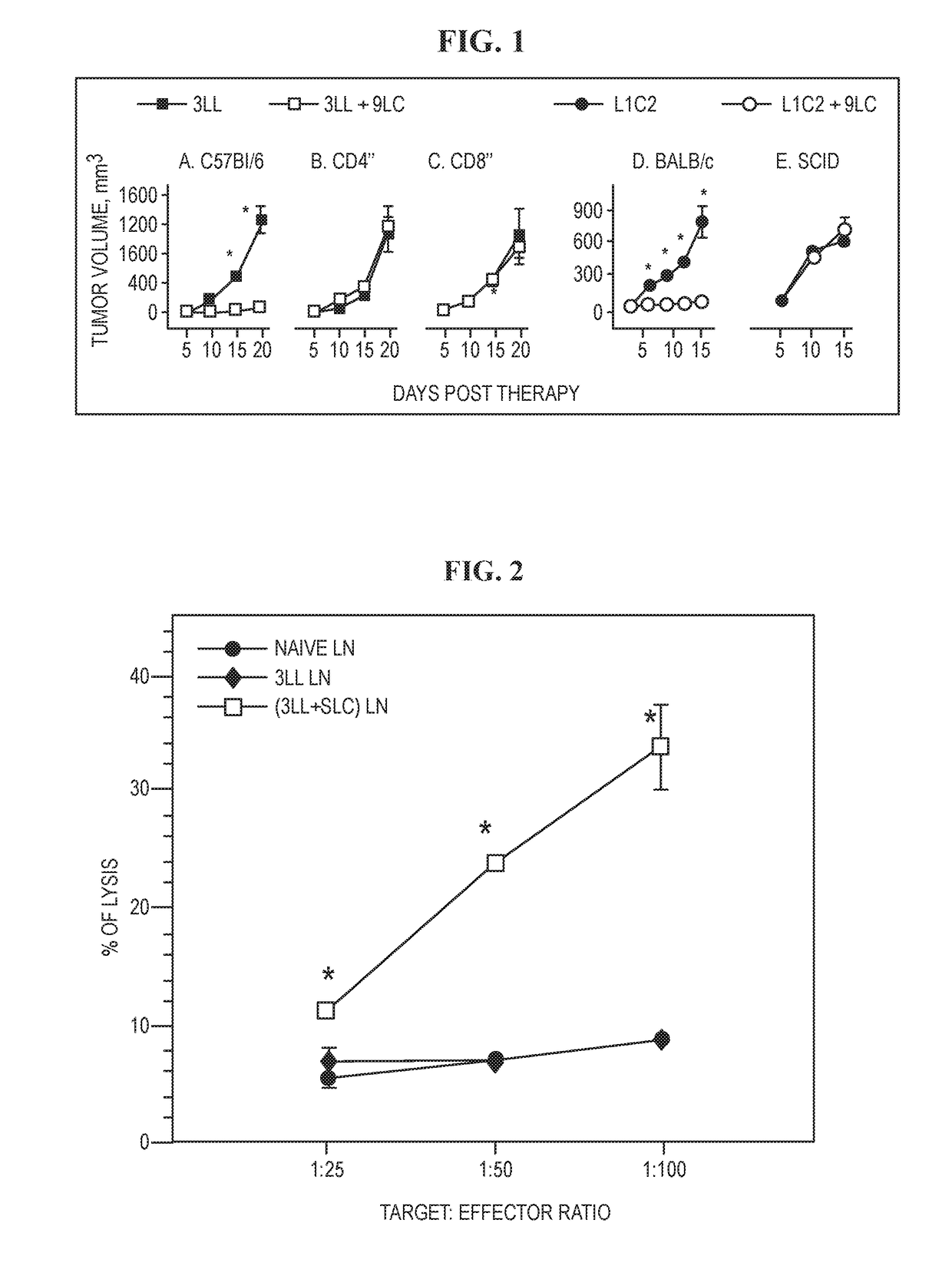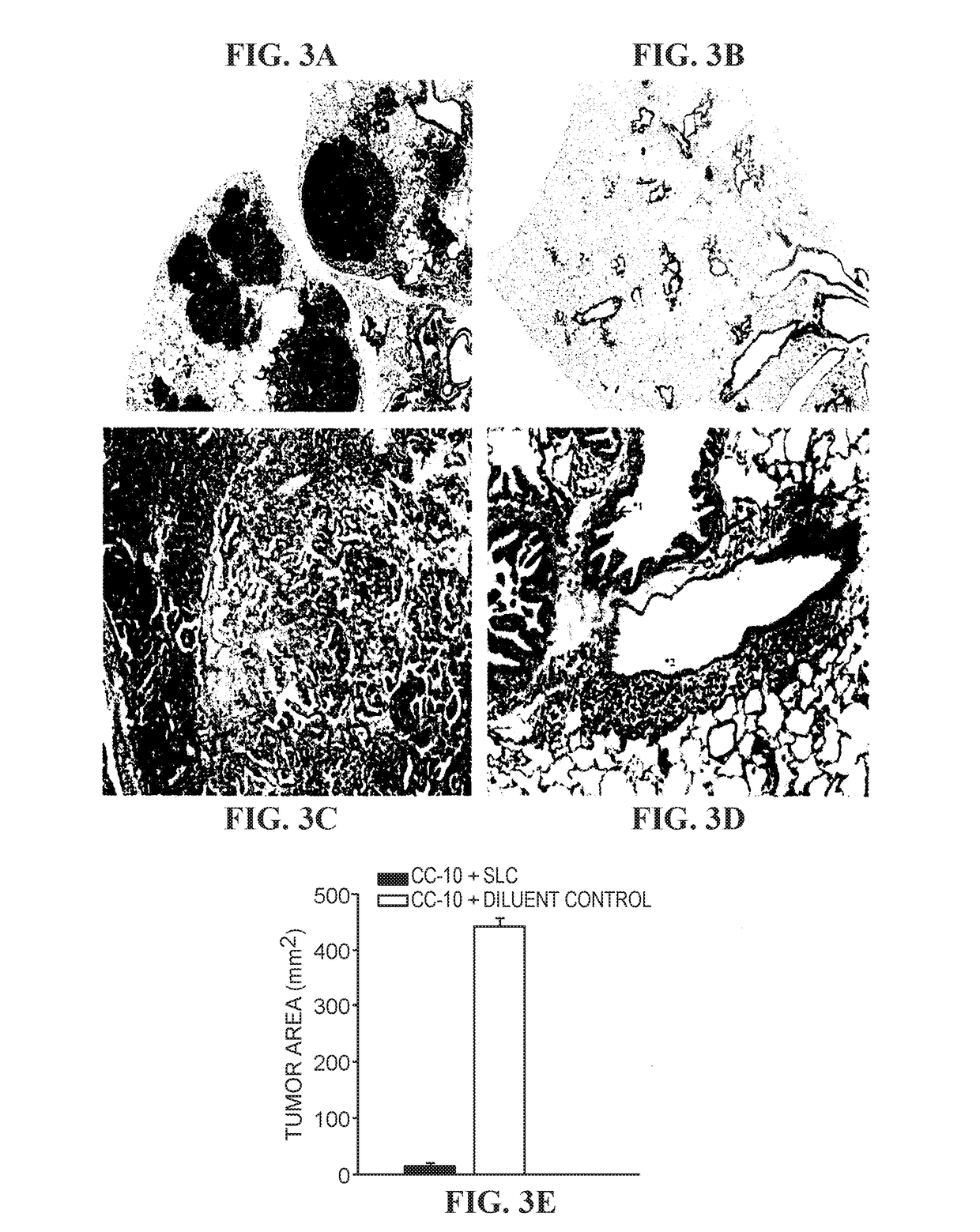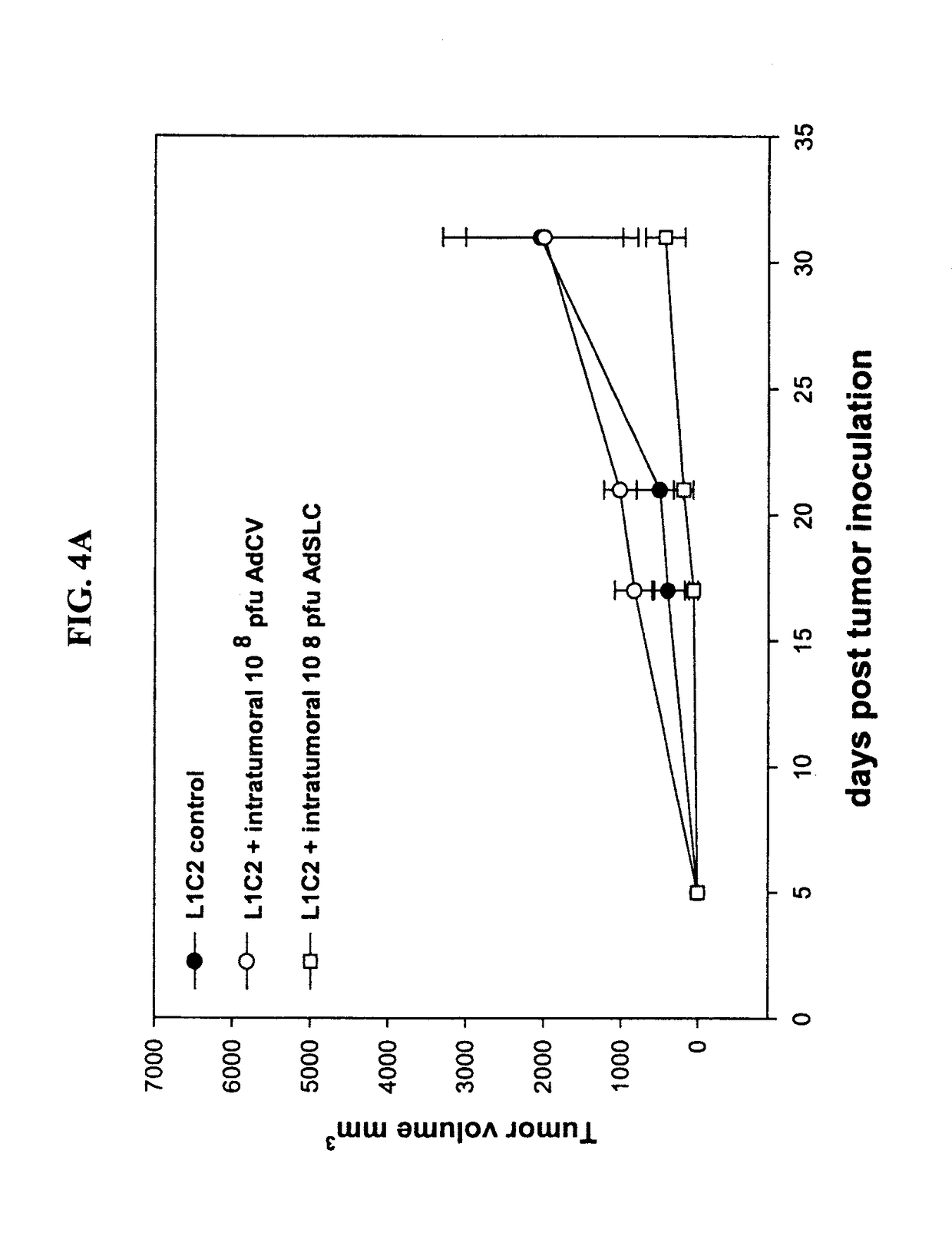Combination Immunotherapy
a technology of immunotherapy and combination, applied in the field of combination immunotherapy, can solve the problems of ineffective apcs and many animal models of cancer which introduce cancer cell lines into an animal, and achieve the effects of reducing tumor burden, enhancing survival, and increasing cd4 and cd8 lymphocytes
- Summary
- Abstract
- Description
- Claims
- Application Information
AI Technical Summary
Benefits of technology
Problems solved by technology
Method used
Image
Examples
example 1
nd Materials for Examining Immunomodulatory Molecules Such as SLC in Syngeneic Transplantable Tumor Models
1. Cell Culture and Tumorigenesis Models
[0248]Two weakly immunogenic lung cancers, line 1 alveolar carcinoma (L1C2, H-2d) and Lewis lung carcinoma (3LL, H-2b), were utilized for assessment of antitumor responses in vivo. The cells were routinely cultured as monolayers in 25-cm3 tissue culture flasks containing RPMI 1640 (Irvine Scientific, Santa Ana, Calif.) supplemented with 10% FBS (Gemini Bioproducts, Calabasas, Calif.), penicillin (100 U / ml), streptomycin (0.1 mg / ml), 2 mM glutamine (JRH Biosciences, Lenexa, Kans.) and maintained at 37° C. in a humidified atmosphere containing 5% CO2 in air. The cell lines were Mycoplasma free, and cells were utilized up to the tenth passage before thawing frozen stock cells from liquid N2. For tumorigenesis experiments, 105 3LL or L1C2 tumor cells were inoculated by s.c. injection in the right suprascapular area of C57BL / 6 or BALB / c mice, a...
example 2
Immunomodulatory Molecules in Syngeneic Transplantable Tumor Models Using SLC as a Illustrative Molecule
[0256]The disclosure provided herein tests antitumor properties of SLC utilizing two syngeneic transplanted murine lung cancer models. In both models, intratumoral SLC administration caused significant reduction in tumor volumes compared with diluent-treated tumor-bearing control mice (p<0.01), and 40% of mice showed complete tumor eradication (FIGS. 1, A and D). To determine whether the decrease in tumor volumes resulted from a direct effect of SLC on L1C2 and 3LL, the in vitro proliferation of the tumor cells was assessed in the presence of SLC. SLC (200 ng / ml) was added to 105 L1C2 and 3LL cells plated in 12-well Costar plates, and cell numbers were monitored daily for 3 days. SLC did not alter the in vitro proliferation rates of these tumor cells.
[0257]To evaluate the role of host immunity in SLC-mediated antitumor responses, SLC was injected intratumorally in tumor-bearing SC...
example 3
nd Materials for Examining Immunomodulatory Molecules Such as SLC in Spontaneous Tumor Models
1. Cell Culture.
[0266]Clara cell lung tumor cells (CC-10 Tag and H-2q) were derived from freshly excised lung tumors that were propagated in RPMI 1640 (Irvine Scientific, Santa Ana, Calif.) supplemented with 10% FBS (GeminiBioproducts, Calabasas, Calif.), penicillin (100 units / ml), streptomycin (0.1 mg / ml), and 2 mM of glutamine (JRH Biosciences, Lenexa, Kans.) and maintained at 37° C. in humidified atmosphere containing 5% CO2 in air. After two in vivo passages, CC-10 TAg tumor clones were isolated. The cell lines were Mycoplasma free, and cells were used up to the tenth passage before thawing frozen stock cells from liquid N2.
2. CC10TAg Mice.
[0267]The transgenic CC-10 TAg mice, in which the SV40large TAg is expressed under control of the murine Clara cell-specific promoter, were used in these studies (Magdaleno et al., Cell Growth Differ., 8: 145-155, 1997). All of the mice expressing the ...
PUM
| Property | Measurement | Unit |
|---|---|---|
| total volume | aaaaa | aaaaa |
| volume | aaaaa | aaaaa |
| pH | aaaaa | aaaaa |
Abstract
Description
Claims
Application Information
 Login to View More
Login to View More - R&D
- Intellectual Property
- Life Sciences
- Materials
- Tech Scout
- Unparalleled Data Quality
- Higher Quality Content
- 60% Fewer Hallucinations
Browse by: Latest US Patents, China's latest patents, Technical Efficacy Thesaurus, Application Domain, Technology Topic, Popular Technical Reports.
© 2025 PatSnap. All rights reserved.Legal|Privacy policy|Modern Slavery Act Transparency Statement|Sitemap|About US| Contact US: help@patsnap.com



